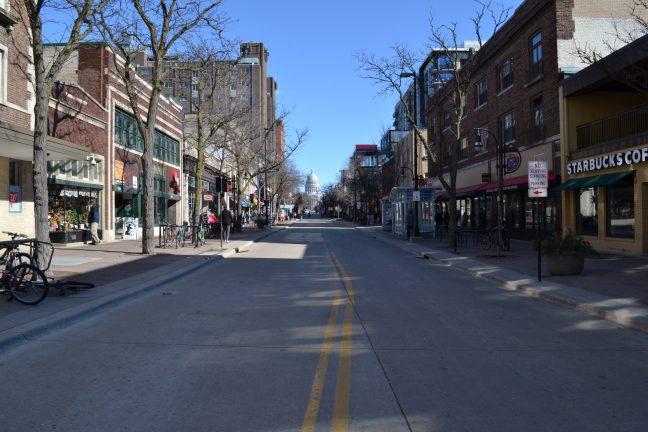A recent study from the State Smart Transportation Initiative, a think tank jointly operated by the University of Wisconsin and Smart Growth America, found one way to reduce traffic congestion is by, counterintuitively, building fewer roads. The idea, according to SSTI Director Eric Sundquist, is “When we add capacity [build more roads], we induce more driving … So there’s sort of a vicious cycle …”
To their unassuming demise, local, regional and state governments tend to treat transportation as a supply problem of their auto-infrastructure. Ironically, they make great accommodations for the increased vehicular presence. This emphasis on accommodation very predictably exacerbates the traffic issue, placing incredible costs on the taxpayer, travelers, neighborhoods and the environment.
The researchers present the study as a guide to the modern mitigation approach. The modern mitigation approach centers around the long-standing, typically employer-based, practice of transportation demand management, which seeks to reduce the amount of cars on the road.
They also briefly offer and evaluate an array of currently-implemented solutions from this demand-side approach. As a response to this study, the city of Madison should consider its own auto-infrastructure issue, understand what has been proven to be successful and use the current mitigation programs already set up in the city as a springboard for further reducing the amount of vehicles on the roads.
There are generally two different approaches to traffic congestion — a supply side and a demand side. Demand side approaches are long-term solutions which seek to decrease the consumer’s demand for transportation by promoting ride shares and telecommuting. Supply side approaches are short-term, relieve congestion and allow for a high capacity of consumers to drive into a city.
The problem is the sustainability of this benefit. Over time, the demand exceeds the supply of infrastructure back to its original levels. A clear demonstration of this short-run advantage but long-run disadvantage of supply-side remedies is the I-10 Katy Freeway expansion project in Houston, a $2.8 billion investment intended to relieve severe traffic congestion. At its widest, Katy Freeway is 26 lanes across and has a maximum of nine undivided, single-direction lanes. A behemoth of auto-infrastructure and an incredible feat of traffic engineering, the freeway expansion only led to a 30 percent increase in commute times during the morning and 55 percent in the afternoon.
The long-term benefits of reducing the amount of the cars are nearly innumerable, from the increased safety, reduced costs of driving and parking, to the increased land value, better air quality, decreased noise and decreased greenhouse gas emissions. On the other hand, those who favor supply side approaches believe these type of plans generally apply costs more fairly to those who cause the congestion, such as developers, and if applicable, tollway users. These consumers generally foot the bill for construction projects. One way to overcome this while still decreasing the number of cars on the road is to create something similar in nature to an impact fee, such as a system where obligations are based on parking capacity and produce a comparable fair distribution of costs.
In Cambridge, Massachusetts, the city measures various transportation indicators such as subsidized transit passes, shuttle services, bicycle and pedestrian facilities, preferential parking for low-emission vehicles, and can charge $10 extra per parking space per day if certain requirements are not met.
While the study focuses itself as a guidebook to policymakers stuck in the old form of mitigation, they highlight a few specific elements, several of which Madison has already deeply invested itself in — such as affordable housing (Madison has a $25 million Affordable Housing Fund), bicycle facilities (the city greatly accommodates) and ridesharing (the Department of Administration’s VanPool program for those commuting into Madison is an excellent example here). Madison is further along the modern mitigation process than many other cities. We just need to be reminded that a little bit can go a long way when it comes to developing our ever-growing city.
Lianna Schwalenberg (lschwalenber@wisc.edu) is a recent graduate with degrees in communication arts and philosophy.


